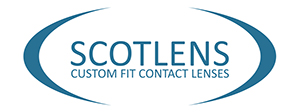LENS ADJUSTMENTS
Learning Outcomes
After completing this module you should understand how:
- Power changes alter the lens geometry
- Apical thickness changes alter lens geometry
- To alter alignment curves following topography interpretation
NOCTURNAL™ ADJUSTMENTS
There is a simple process for ordering lens adjustments.
There are 3 levels of adjustment each with a separate online form (from the Scotlens members section)
- Power adjustment form
- When new lenses are required with simple power adjustments
- Treatment zone adjustment form
- When the apical tear thickness and power needs altered based on topography or slit lamp exam
- Lens fit adjustment form
- When lenses are decentred or a poor alignment is indicated by topography and poor VA
- The purpose of Nocturnal night lenses is to provide 20/happy vision to your patient with a healthy cornea. If their vision is good a residual refraction or topography that is not perfect does not need to be corrected.
- Lenses should not be adjusted until full correction is achieved with 2 weeks wear
- Patients should continue to wear initial lenses until the adjustments are received. Patients will fully correct to adjusted lenses after 2-to-3-nights wear
NOCTURNAL™ POWER ADJUSTMENT
Use this form when a SE improves the VA AND:
- There is a bullseye topography
- There is no apical corneal staining
- If a power change of more than 1.00D is needed ensure there is no central island or lens decentration
- The BOZR of the new lens will alter by the power change (see diagram)
- A -1.00 change will alter BOZR 8.40 to 8.60, (+1.00 reduce correction 8.40 to 8.20)
- Adjusting the lens power alters the base curve and maintains the same apical tear thickness and alignment fit

Use the online power adjustment form to order a replacement lens or lenses with power adjustments.
The form can be used to order a single lens or a pair.

NOCTURNAL™ TREATMENT ZONE ADJUSTMENT
Adjust the TZ there is irregularity in the TZ.
This can be shown by topography when the power inside the TZ is not regular.
TZ irregularity can also be shown at slit lamp exam if there is staining.
If the patient has a bullseye topography but experiences worse than expected aberrations altering the TZ may improve VA.

Use the online treatment zone adjustment form to order a replacement lens with apical tear thickness and power adjustments.
This form can only be used for a single lens.

NOCTURNAL™ LENS FIT ADJUSTMENT
When the TZ is not bullseye it indicates a poor fitting lens.
Adjusting the lens based on the topography pattern should correct the TZ position.
As with any lens fit sometimes the adjustment will not work as expected.
The Nocturnal New Fit Guarantee includes two exchanges to cover this uncommon eventuality.
If the first adjustment worsens the TZ outcome try adjusting the lens in the opposite way. i.e. A frowny face lens is adjusted to flatten the AZ, but on review it is the same or worse. The second adjustment should be to steepen the AZ from the original lens fit.
There are rare cases where a bullseye TZ is not achievable. Topography shows is the corneal shape but can’t account for lid-lens interaction. Patients should try and avoid any eye lid pressure when sleeping like eye masks or sleeping face on pillow.
If the lens fit is poor the power correction will be unreliable. Adjust the lens fit first without incorporating the full SE. The power correction should improve if the TZ sits more central. Only change the power by a maximum of ¼ or ½ any residual SE at the same time as adjusting the AZ.
Diameter changes significantly impact on the fit. Only alter the diameter if it is suspected to be too large. Do not alter the diameter at the same time as AZ alterations.
If you are unsure of the adjustment to make, send the SE refraction, and images of axial and tangential subtractive topography via the Nocturnal™ Support Form.
Use the online Nocturnal lens fit adjustment form when the lens fit is not acceptable.
This form can only be used for a single lens.

SUMMARY
- Lens power is adjusted to improve VA.
- A SE as close to plano will provide optimum VA
- The TZ can be adjusted by altering the apical tear thickness and lens power
- The lens fit can be altered when lenses decenter
- Lens adjustments are made by completing the Nocturnal™ adjustment forms available in the Scotlens Members section
- Power adjustment form
- Treatment zone adjustment form
- Lens fit adjustment form
